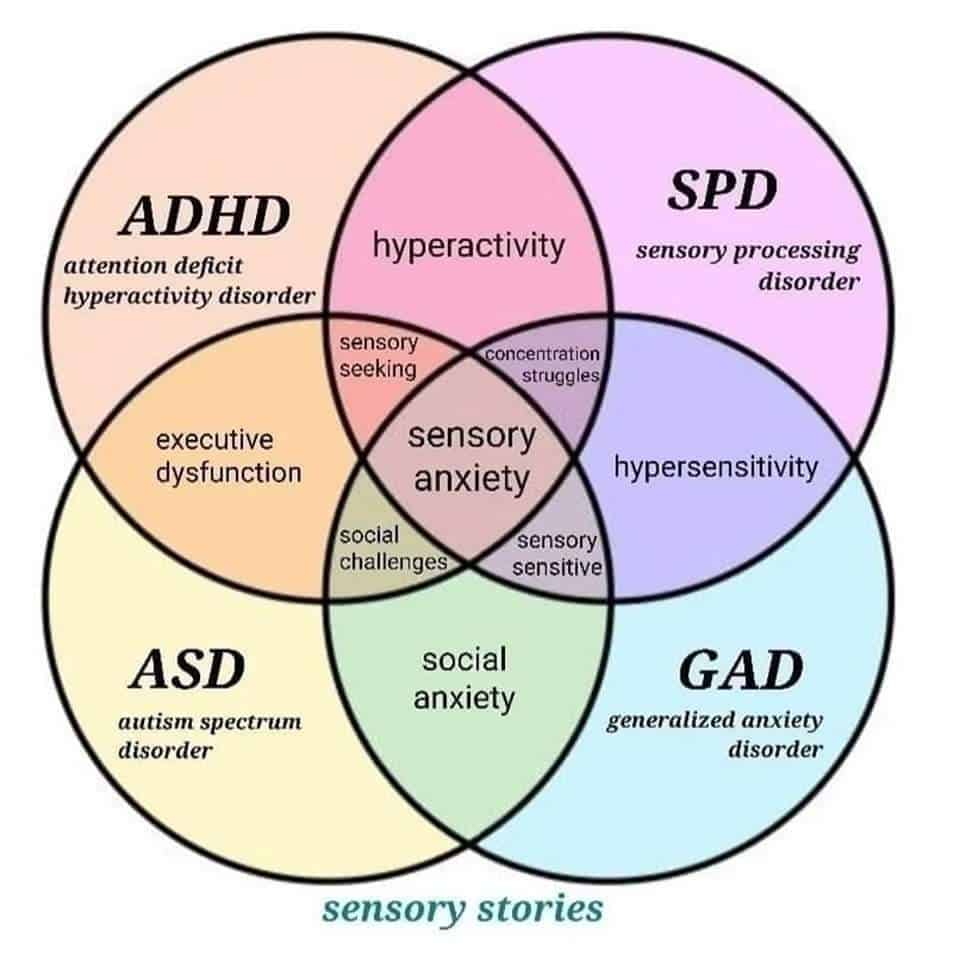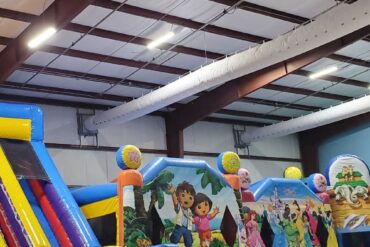Welcome to Our Comprehensive Guide on Sensory Processing Disorder and ADHD for Parents
Are you grappling with your child’s restless behavior or difficulties in responding to sensory information? You’re not alone! Sensory Processing Disorder (SPD) and Attention Deficit Hyperactivity Disorder (ADHD) are prevalent in many kids today, challenging families in unique ways. But worry not! Our heartfelt guide is here to shed light on these complex conditions, providing insights, management strategies, and loads of support to enhance your little one’s journey. Let’s unravel the mysteries of SPD and ADHD together!
What is Sensory Processing Disorder (SPD)?
Sensory Processing Disorder is a neurological condition where the brain has trouble receiving and responding to information that comes in through the senses. Some children may find clothing textures unbearable, while others might be overwhelmed by noises that most of us can easily ignore. It’s a spectrum, where no two kids experience it exactly the same way!
Recognizing the Ties Between SPD and ADHD in Children
While SPD and ADHD can occur independently, they often coexist. Children battling ADHD may exhibit hyperactive, impulsive, or inattentive behavior, which might be amplified by sensory processing issues. Distinguishing where one begins and the other ends can be quite the puzzle, but understanding their relationship is key to supporting your child effectively.
Symptoms to Look Out For
Every parent is a detective in their own right, spotting clues in their child’s behavior that could point to SPD or ADHD. Here are some potential signs of Sensory Processing Disorder:
- Overreacting to certain textures, tastes, smells, sounds, or lights
- Difficulty with coordination and tasks that require fine motor skills
- Avoidance or seeking out intense sensory experiences
And for ADHD, typical markers include:
- Difficulty focusing or staying on task
- Excessive physical movement and inability to sit still
- Impulsive actions and difficulty delaying gratification
Stay attuned to these behaviors in various environments such as at home, school, or during social activities to gather a holistic picture of your child’s experiences.
Approaches to Managing SPD and ADHD
Managing these conditions is not about curing your child but rather empowering them to navigate the world more comfortably. Multi-faceted approaches often include:
- Occupational Therapy: Specifically, Sensory Integration Therapy can help children learn how to respond to sensory stimuli more effectively.
- Behavioral Therapy: It is designed to modify specific challenging behaviors associated with ADHD.
- School Accommodations: IEPs or 504 plans can tailor the learning environment to your child’s unique needs.
We understand it can be overwhelming, but rest assured, this is just the first layer of our in-depth guide. In the sections to come, we’ll delve into effective therapies, expert tips for navigating daily life, and the power of community support. We believe in your ability to acquaint yourself with the nuances of SPD and ADHD and to craft a nurturing environment that helps your child thrive!
Remember, as you explore the world of SPD and ADHD, patience and love are your greatest allies. Children with sensory and attentional challenges are on their unique journey, and with your guidance, they can find their path to success and happiness. So, fasten your seatbelts, and let’s embark on this enlightening expedition together! Stay tuned for more useful insights to bolster your parenting toolkit and enrich your child’s developmental journey.

Five Things Parents Should Know in Preparing for Sensory Processing Disorder and ADHD
1. Early Intervention Makes a Difference
Recognizing and addressing the symptoms of SPD and ADHD early can significantly improve outcomes for your child. Early intervention helps in developing coping strategies that become crucial as the child grows. The sooner you can start therapies like Occupational Therapy or Behavioral Therapy, the better equipped your child will be to handle sensory or attentional challenges.
2. Consistency is Key
Routines and consistent responses to behaviors help children with SPD and ADHD feel secure and understand expectations. Whether it’s a bedtime routine or consistent consequences for certain behaviors, structure can provide a sense of stability for children who otherwise experience a chaotic sensory world or struggle with attention.
3. Education and Advocacy Go Hand in Hand
Educating yourself about both conditions empowers you to be an informed advocate for your child. Know your child’s rights in educational settings, including accommodations through IEPs or 504 plans, and don’t hesitate to seek these resources. Advocacy also includes communicating with teachers, family, and friends to ensure they understand your child’s needs.
4. Celebrate Small Wins
Children with SPD and ADHD often work harder than their peers to accomplish tasks that seem simple to others. Celebrating small victories not only boosts your child’s confidence but also reinforces positive behaviors and coping techniques. Whether it’s trying a new food or completing a homework assignment, these accomplishments are momentous.
5. Self-Care for Parents is Important Too
It’s essential to take care of your mental and physical health as you support your child. Parenting a child with SPD or ADHD can be demanding, and it’s easy to neglect your wellbeing. Be sure to carve out time for yourself, seek support from communities, and consider counseling if needed. Remember, you need to be your best self to provide the best care for your child.
Creating a Supportive Environment at Home
Designing a sensory-friendly home environment can greatly ease daily challenges for children with SPD and ADHD. Consider the following elements:
- Maintaining a clutter-free and organized space to minimize distractions and sensory overload.
- Using calming colors and soft lighting, especially in areas designed for relaxation and sleep.
- Providing a variety of sensory toys and fidget tools that can help your child regulate sensory input.
- Utilizing noise-canceling headphones to manage overwhelming auditory stimulus when needed.
- Having quiet zones or sanctuary spaces where your child can retreat to when feeling overstimulated.
Nourishing Your Child’s Strengths
As you navigate SPD and ADHD, it’s vital to focus on your child’s strengths and interests. Many children with these conditions are highly creative, intuitive, or skilled in particular areas. By nurturing their inherent talents, you can boost their confidence and provide an outlet for expression. Engage in activities that interest them and integrate therapeutic interventions within their favorite play.
By embracing the knowledge, strategies, and tips discussed in this guide, you’re well on your way to creating a supportive and nurturing environment for your child facing SPD and ADHD. Understanding these conditions, arming yourself with the right tools, and having a loving approach can make a world of difference in both your and your child’s life.
Every child’s path is unique, but with the right support, children with Sensory Processing Disorder and ADHD can grow up to lead successful, fulfilling lives. Continue to seek out information, engage with supportive communities, and never underestimate the power of your love and support as a parent. Your journey may be filled with challenges, but it’s also filled with countless opportunities for growth, learning, and joy.
See more great Things to Do with Kids in New Zealand here. For more information see here
Disclaimer
The articles available via our website provide general information only and we strongly urge readers to exercise caution and conduct their own thorough research and fact-checking. The information presented should not be taken as absolute truth, and, to the maximum extent permitted by law, we will not be held liable for any inaccuracies or errors in the content. It is essential for individuals to independently verify and validate the information before making any decisions or taking any actions based on the articles.




